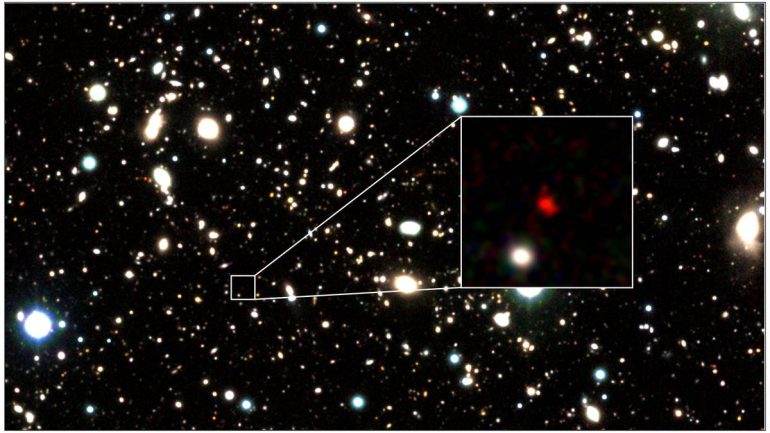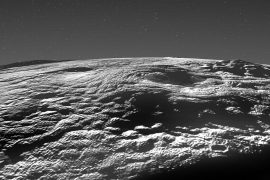Light took 13.5 billion years to travel
Record distance: Astronomers see galaxy that existed shortly after the Big Bang
It’s just a reddish spot in images of the starry sky—but it’s the most distant object astronomers have ever found: light from the HD1 galaxy took 13.5 billion years to reach Earth. Sky researchers can thus see the star system as it was 13.8 billion years ago, 300 million years after the Big Bang. The researchers write that it is still unclear why HD1 shines so brightly that it is visible at all from this distance. They present their findings in two studies in the journals “Monthly Notices of the Royal Astronomical Society” and “Astrophysical Journal”.
After Advertisement Read more
After Advertisement Read more
“Questions about the nature of such a distant object are extremely difficult to answer,” admits Fabio Pacucci of the Harvard-Smithsonian Center for Astrophysics in the US, one of the discoverers of HD1. Because astronomers receive very little light because of their greater distance from the Milky Way. Surprisingly to the researchers, however, HD1 shines very brightly in ultraviolet light. “It can only be explained with high-energy processes that took place there billions of years ago,” Pacucci says.
Researchers have two possible explanations
Pacucci and his colleagues offer two possible explanations. Accordingly, many stars of the first cosmic generation may have formed in HD1. And such stars were more massive, hotter and more luminous than the stars in today’s universe. “This could explain the extreme brightness in the ultraviolet range,” Pacucci says.
After Advertisement Read more
After Advertisement Read more
Second Explanation: HD1 hosts a supermassive black hole about 100 million solar masses. When a large amount of gas from the environment falls into such a black hole, high-energy radiation is also generated. However, it would be even more surprising for astronomers to find such a massive black hole 300 million years after the Big Bang. Describing “it will be a challenge”, according to the scientists.
Other researchers are expected to confirm this finding.
Finding a distant galaxy was a daunting task for Pakki’s team. For a total of more than 1200 hours, the researchers explored distant cosmic regions with multiple telescopes on the ground and in space. Pacucci and his colleagues took a closer look at more than 700,000 objects. In the end, HD1 betrayed itself by its strong red color: as the galaxy’s light participates in the expansion of space on its long path to Earth, the wavelength spreads and the light becomes redder and redder.
Observations with the ALMA telescope system – the Atacama Large Millimeter/submillimeter Array in Chile – finally confirmed the great distance: HD1 is 100 million light-years away from us compared to the previous record holder, the galaxy GN-z11. Nevertheless, the finding has yet to be independently confirmed by other researchers. Astronomers are relying on the new James Webb Space Telescope, which is currently delivering the first test images and is scheduled to begin scientific operations in the summer. According to Pacucci and his colleagues, if the record is confirmed, HD1 “will be a remarkable laboratory for studying the universe in an age hitherto inaccessible.”
After Advertisement Read more
After Advertisement Read more
rnd/dpa

Internet fan. Alcohol expert. Beer ninja. Organizer. Certified tv specialist. Explorer. Social media nerd.





